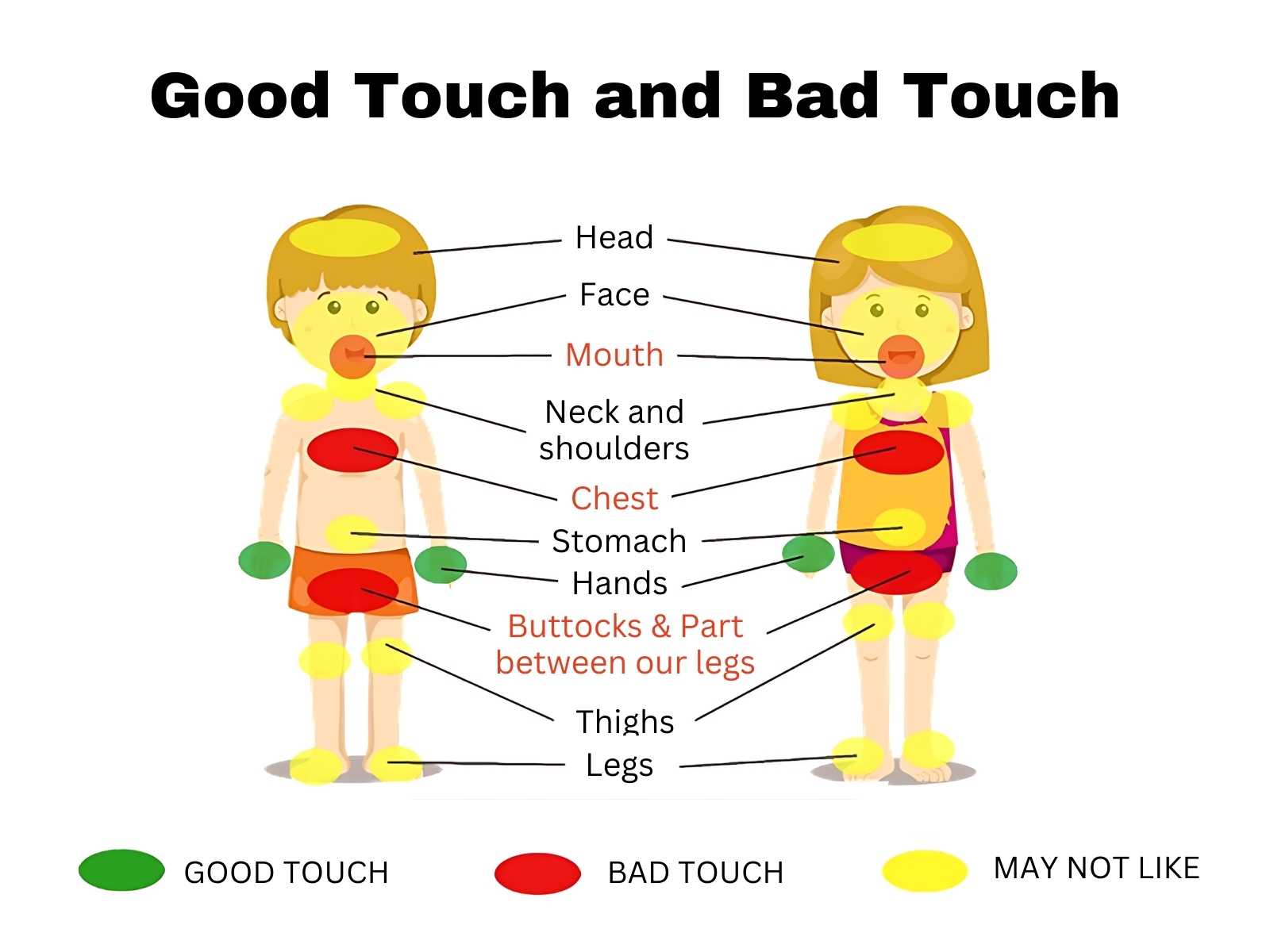Good Touch And Bad Touch: An Important Topic For kids
An Important Topic For Kids
Raising children involves countless conversations – about sharing, healthy habits, and of course, safety. One crucial topic that sometimes feels awkward to bring up is the concept of good touch and bad touch. But here's the thing: this conversation is absolutely essential for empowering your child to protect themselves.
Why is it Important to Talk About Good Touch and Bad Touch?
The world can be a confusing place for kids, especially when it comes to physical touch. They may not understand the difference between safe and unsafe touches. Talking about good touch and bad touch equips them with the knowledge and confidence to identify uncomfortable situations and know how to react.
Let's Talk About Good Touch
Good touch makes your child feel happy, safe, and loved. It's the kind of touch that creates a sense of security and connection. Here are some examples of good touch:
Hugs from family and friends
High fives from coaches or teammates
Gentle pats on the back
A doctor checking your child's temperature (with permission, of course!)
Focus on Feelings:
Instead of focusing solely on body parts, emphasize the emotions associated with good touch. Explain that good touch feels safe, happy, and comfortable.
Empowering Your Child:
Let your child know that their body belongs to them. They have the right to say no to any touch that makes them feel uncomfortable, even if it's from someone they know.
Introducing the Concept of Bad Touch
Now, the more delicate part: explaining bad touch. Bad touch is any touch that makes your child feel scared, confused, or uncomfortable. Here are some key points to convey:
Private Parts: Explain that there are certain private parts of their body that only they and a doctor (with a parent present) should touch. These areas are typically covered by a swimsuit.
Secrets: Emphasize that secrets about touch are not okay. If someone touches them in a way that makes them feel bad and asks them to keep it a secret, they should tell you immediately.
Remember:
Use age-appropriate language.
Focus on making your child feel safe and empowered.
Reassure them that they can always come to you with any questions or concerns.
Here are some additional tips for talking to your child about good touch and bad touch:
Start Early: You can begin these conversations as early as 3 or 4 years old.
Keep it Simple: Use clear and concise language that your child can understand.
Use Stories and Games: Books, songs, and even simple games can be a fun way to introduce these concepts.
Be Repetitive: This is an ongoing conversation, so revisit it regularly.
What to Do if Your Child Discloses a Bad Touch
If your child discloses experiencing a bad touch, here's what to do:
Stay Calm: React with empathy and avoid judgment.
Listen Carefully: Let your child talk without interruption.
Believe Them: Validate their feelings and assure them they did the right thing by telling you.
Take Action: Contact the appropriate authorities, such as the police or child protective services, depending on the situation.
Remember, you are your child's safe haven. By having open and honest conversations about good touch and bad touch, you can equip them with the knowledge and confidence to navigate the world safely.
Additional Resources:
Consider including a few resources at the end of your blog post to provide parents with additional support:
The National Sexual Assault Hotline: 1-800-656-HOPE
Childhelp USA: 1-800-422-4453
By providing these resources, you can empower parents to have these important conversations with their children and ensure their safety.
